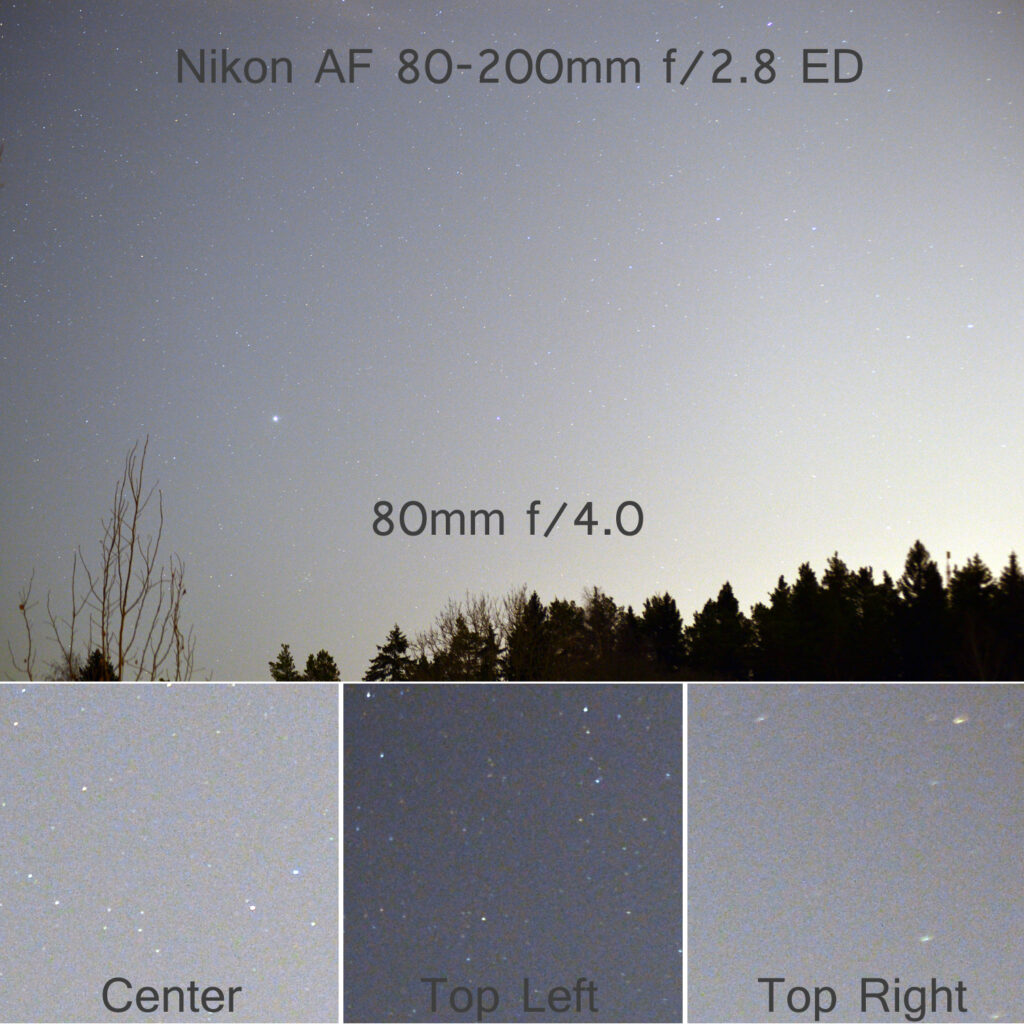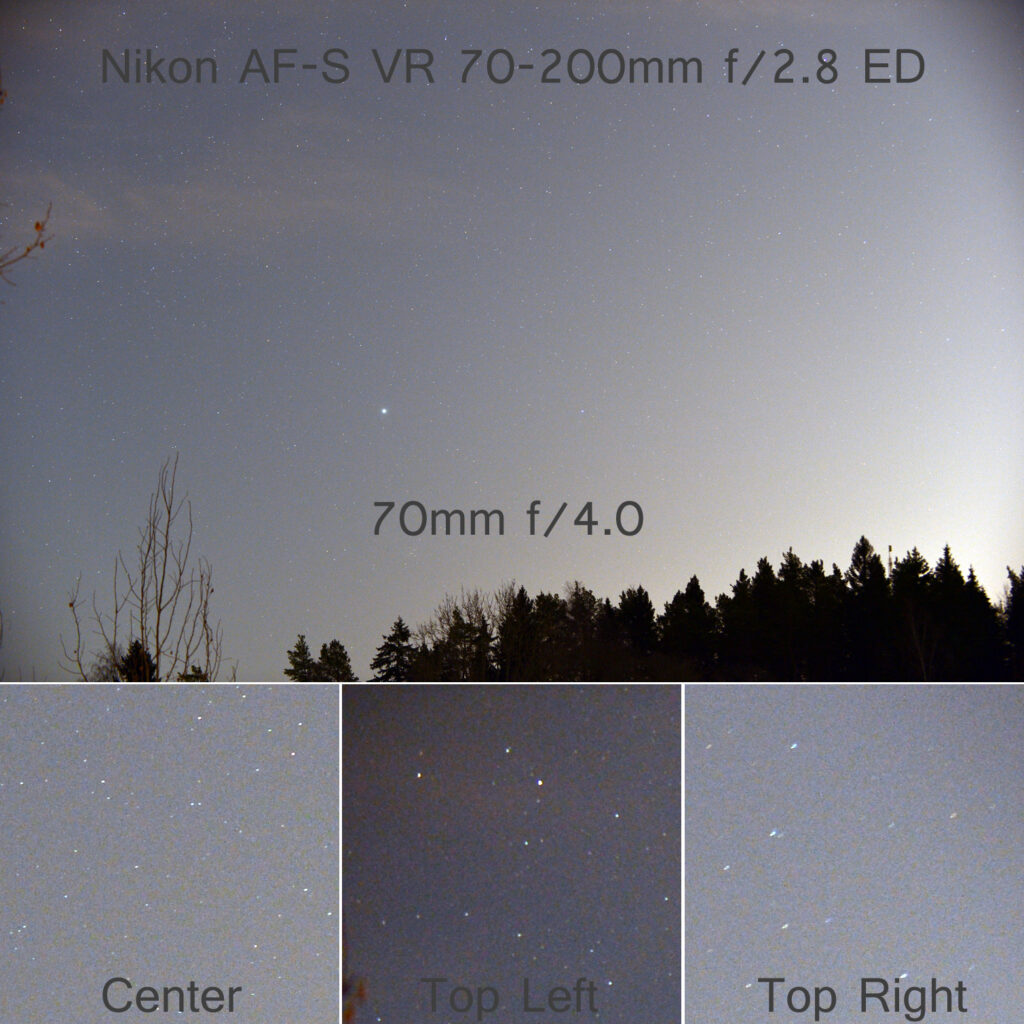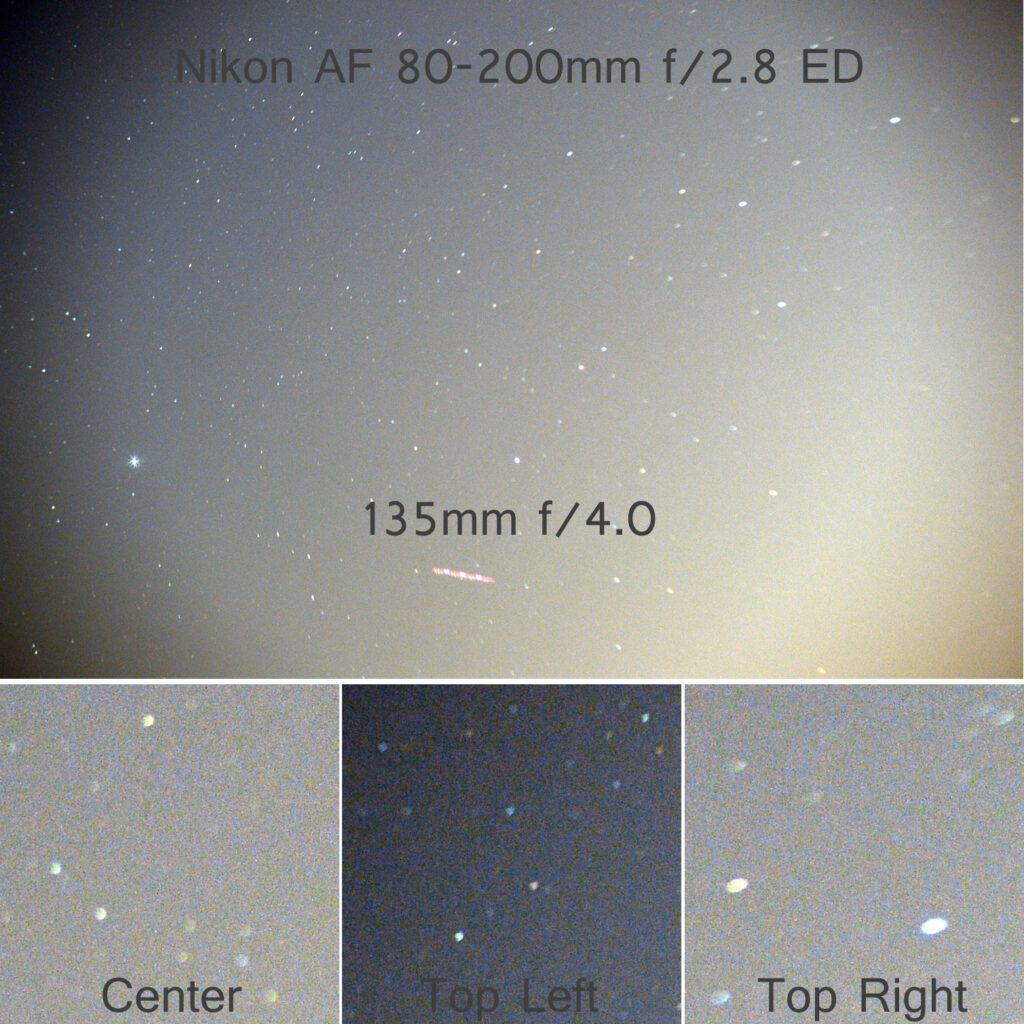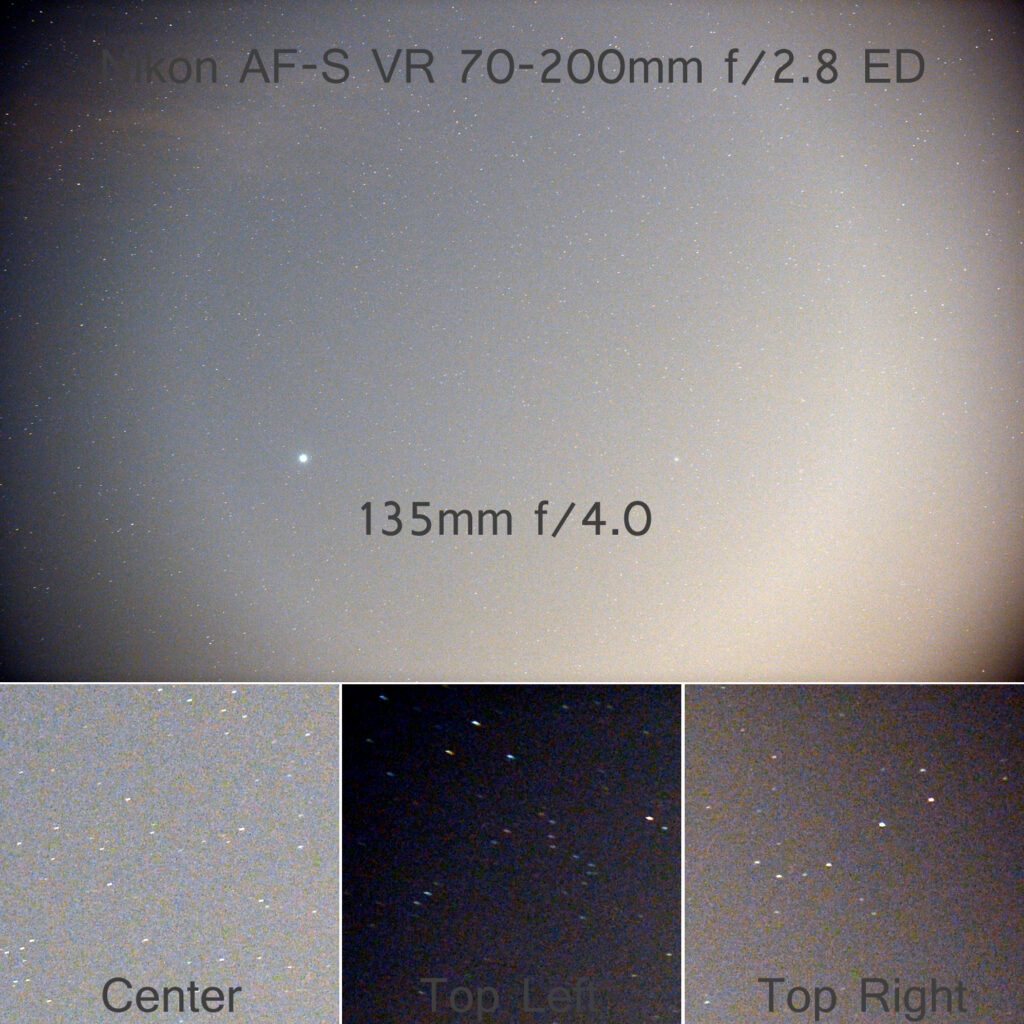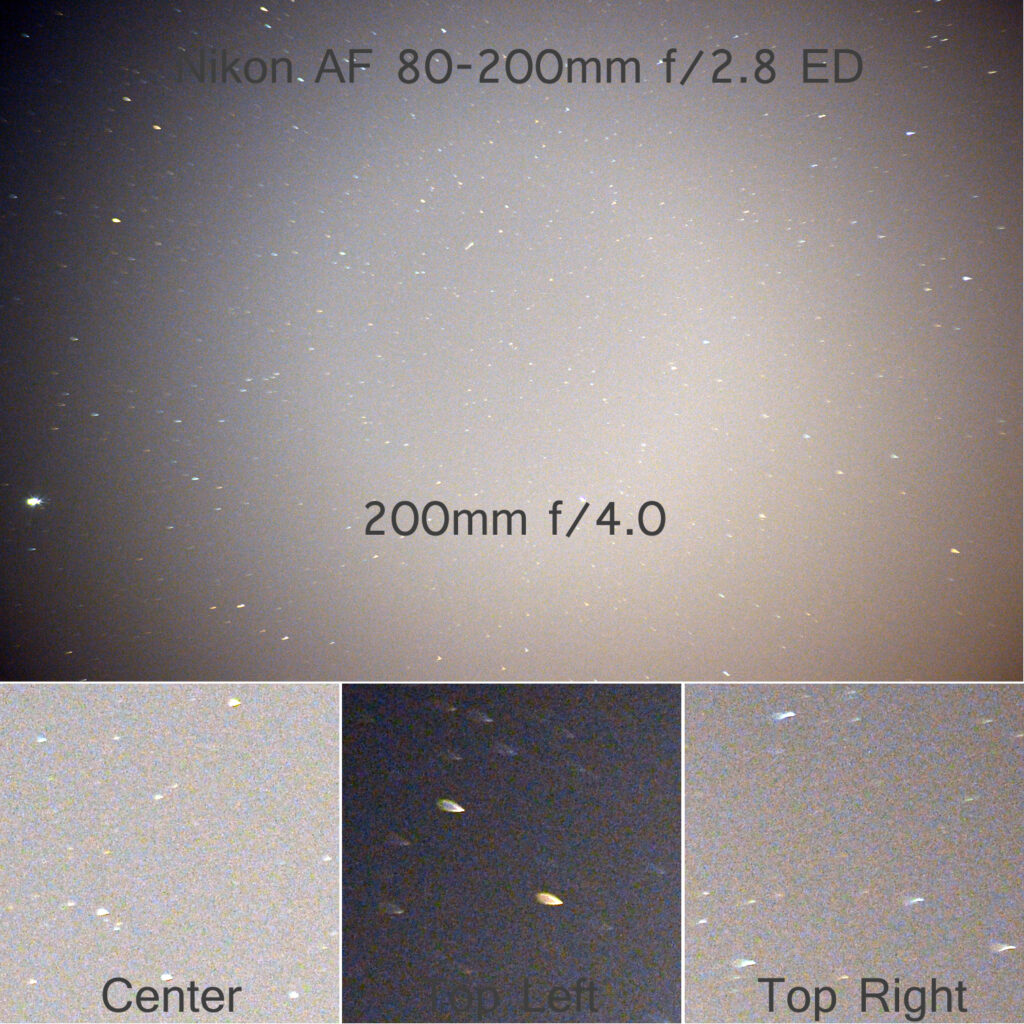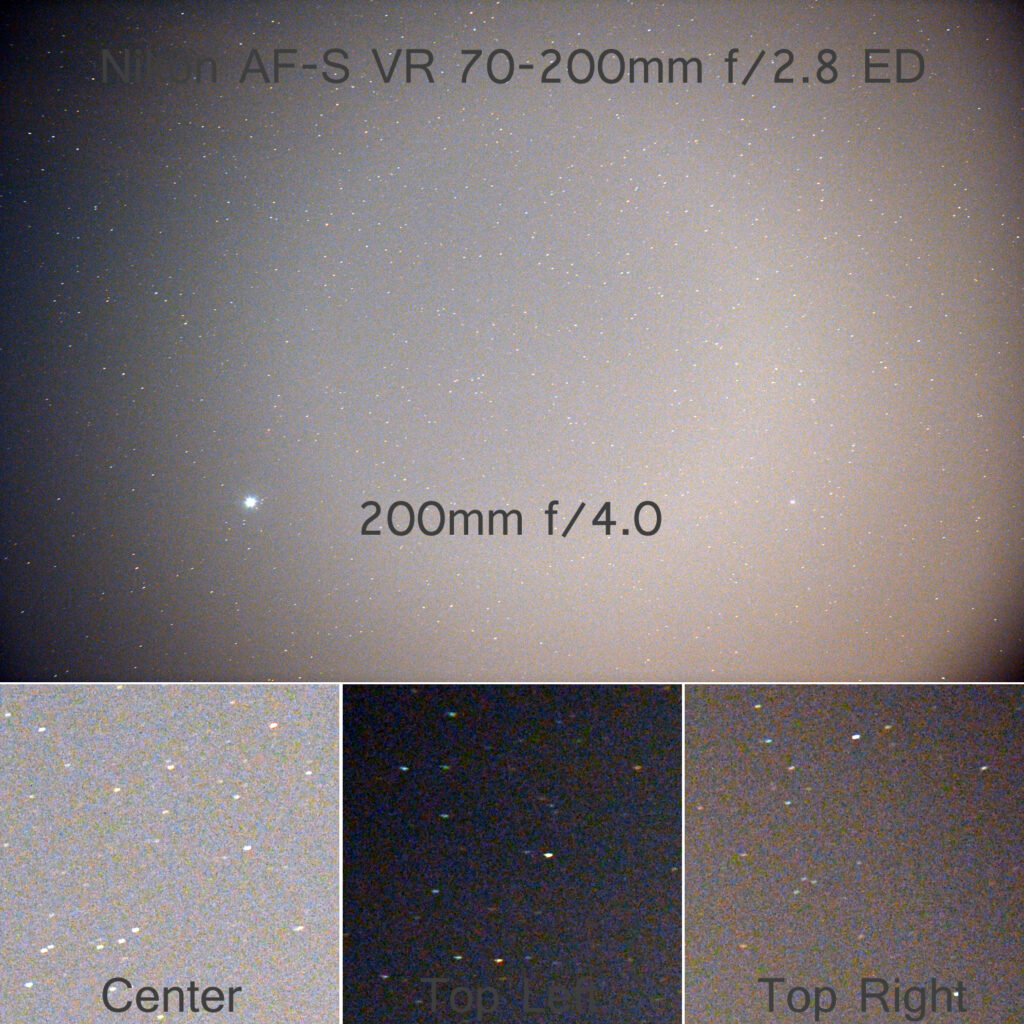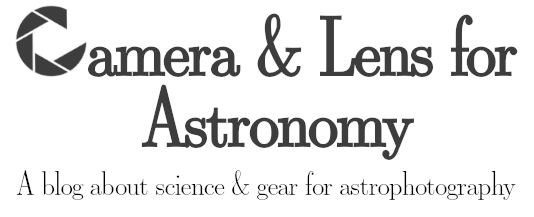Date published: 2016-02-07
Nikkor Lens Comparison for Astrophotography AF 80-200 f2.8 ED vs. AF-S VR 70-200 f2.8 ED
I bought two used Nikon lenses, both very similar in their specifications, which is not surprising as the Nikkor AF 80-200 f2.8 ED is a precursor of the Nikkor AF-S VR 70-200 f2.8 ED (see Ken Rockwell’s history page). With the highest bid, I got the 80-200mm for 280 EUR + 20 EUR shipping from the big bay and for the 70-200mm a private seller in Sweden claimed 8200 SEK, equivalent to 870 EUR. Then I asked myself if it is really worth spending 570 EUR more on the new lens, especially when doing astrophotography, where vibration reduction (VR) and fast autofocus is not needed.
To answer this question, a simple startest was performed. Both lenses were mounted to a Nikon DF (FX format chip: 36mm x 24mm). The camera was then fixed on a tripod without any further star tracking. The scenery was a strongly light-polluted sky. At ISO 1600 an exposure time of 4 seconds was chosen and the camera was pointed towards NE. The startest was performed using an aperture of 2.8 and 4.0. The resulting images are shown further below for reference. The cutouts (center, top right, top left) are 100%, when the images are viewed in their original size.
Conclusion
This Nikkor AF 80-200mm f/2.8 ED I got from Ebay is bad for astrophotography, no it’s terrible! The star images at focal lengths of more than 80mm are frustrating, producing very strong coma effects more or less all over the image and even stopping down to f/4 does not make a big difference. Interestingly at 80mm the quality is OK and the coma disappears in most parts of the image. I am really surprised by this result, because the lens operates really good under daylight conditions when sufficient light is available. This is proven by the testshot below, which is taken at 200mm f/8 and a shutter speed of 1/800 at ISO 800.
On the other side, the Nikkor AF-S 70-200mm f/2.8 VR is superb. It shows only little coma over all focal lengths, with slightly better results when stopped down to f/4.0. Note that the reason for elongated stars is due to the rotation of the Earth during the 4 second exposure and not necessarily coma.

Startest at f/2.8
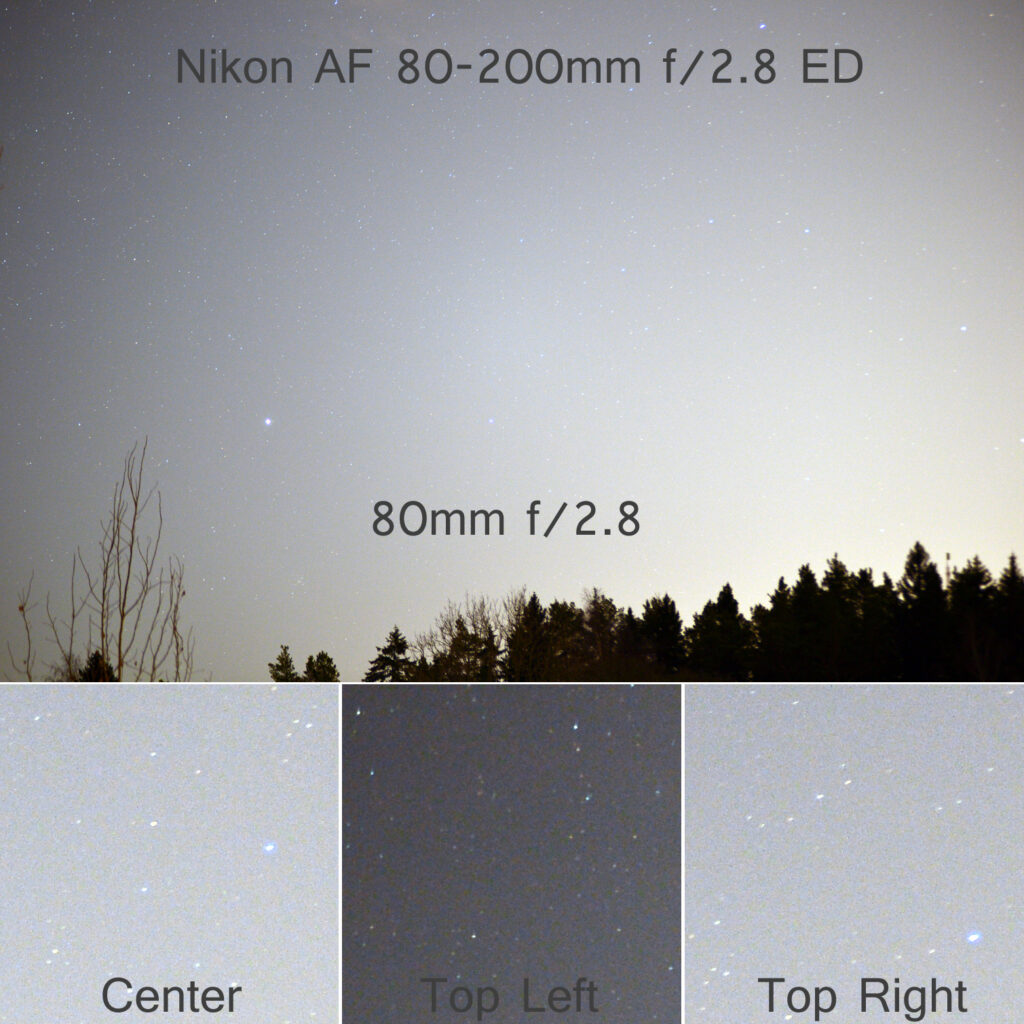
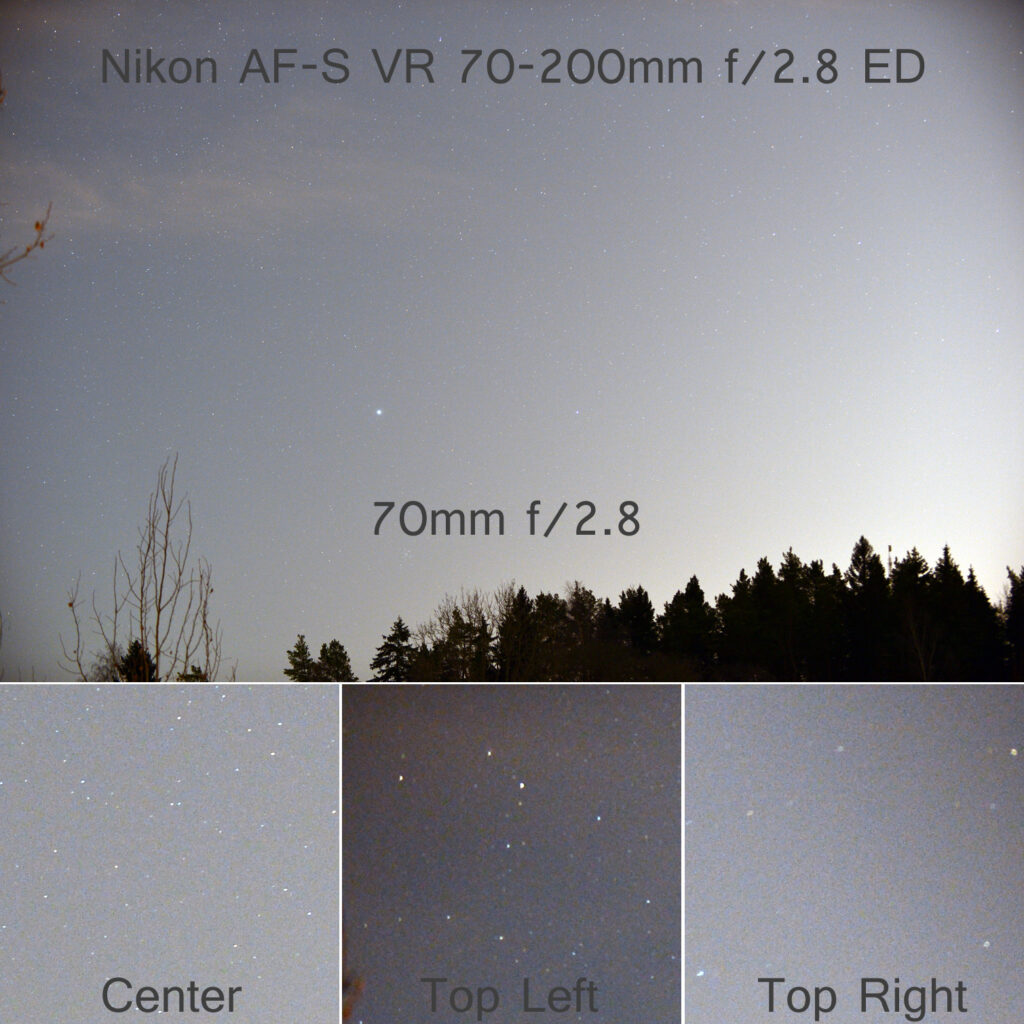
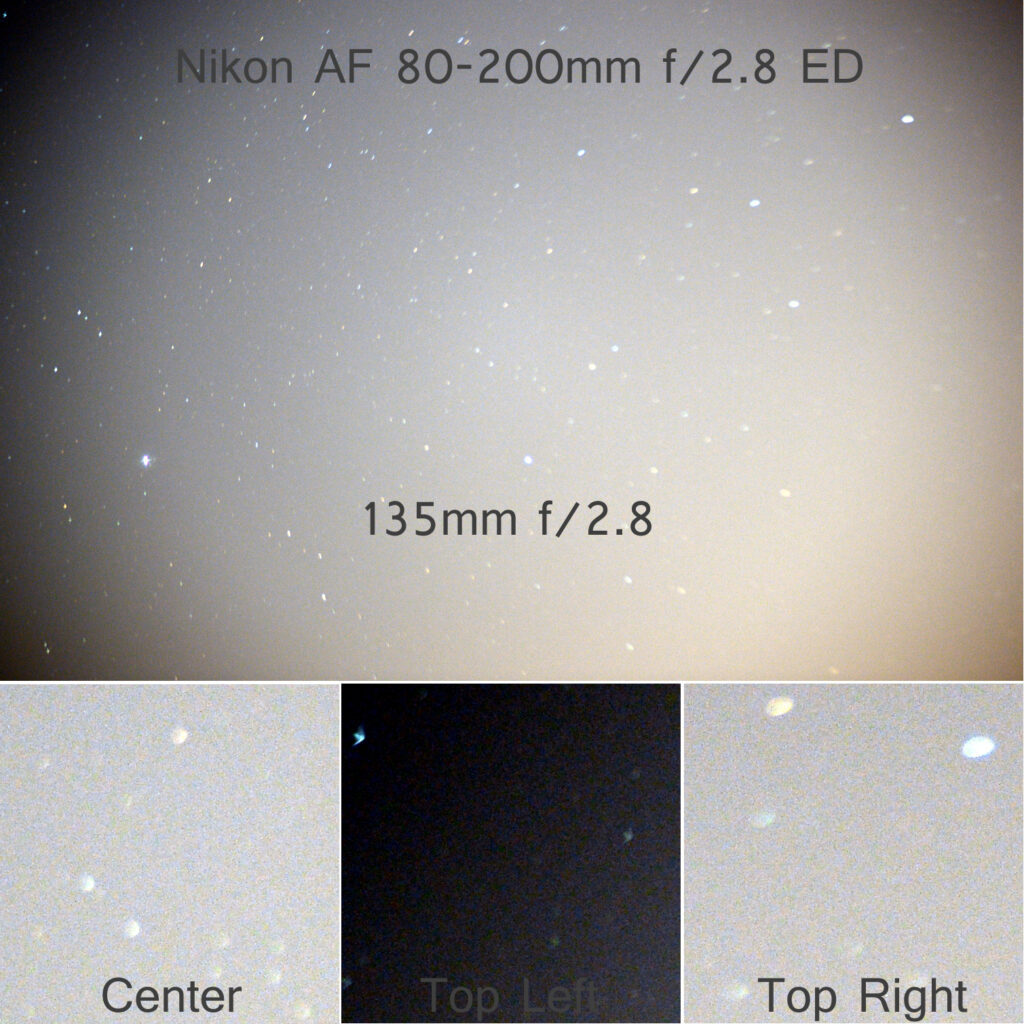
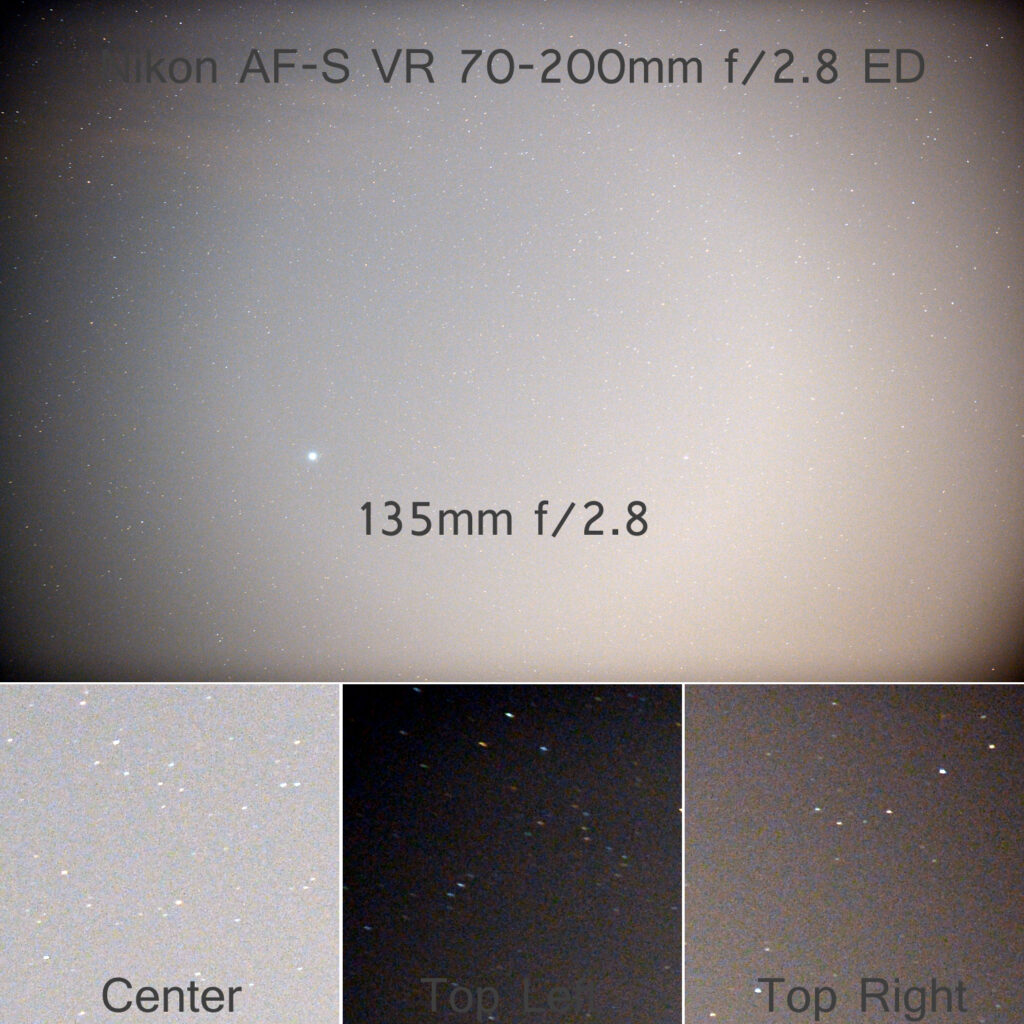
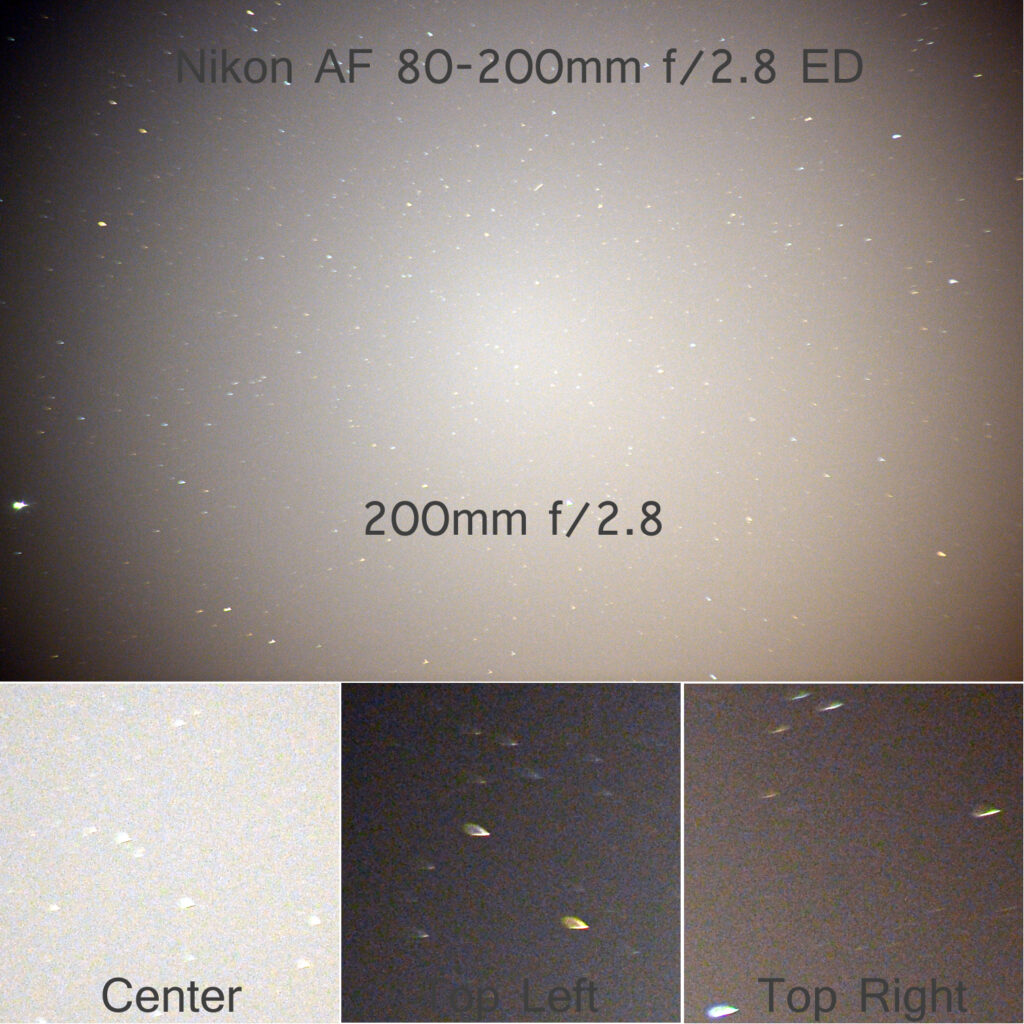
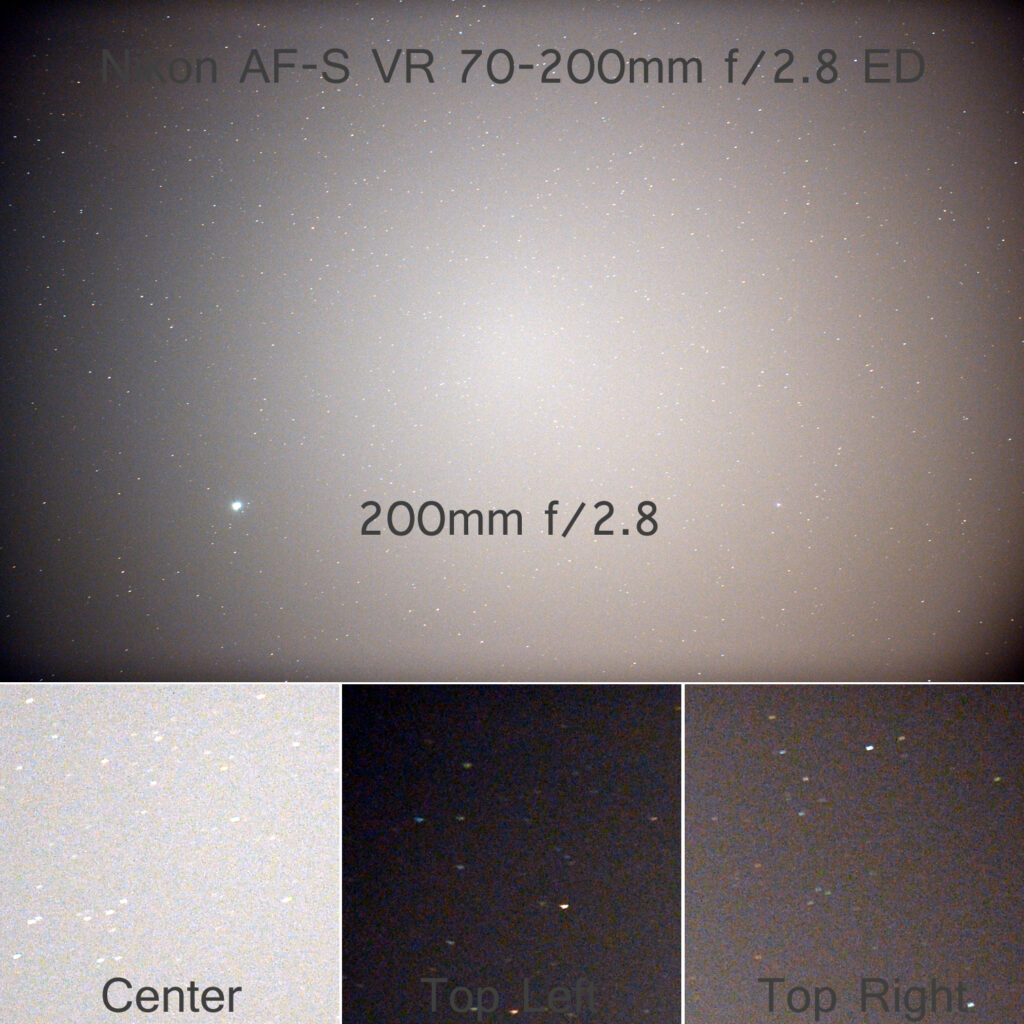
Startest at f/4.0
